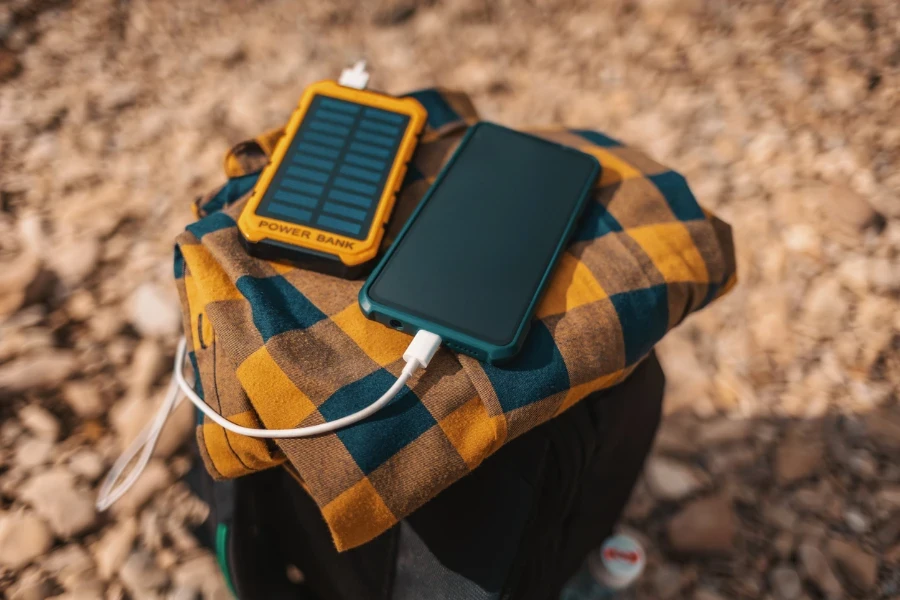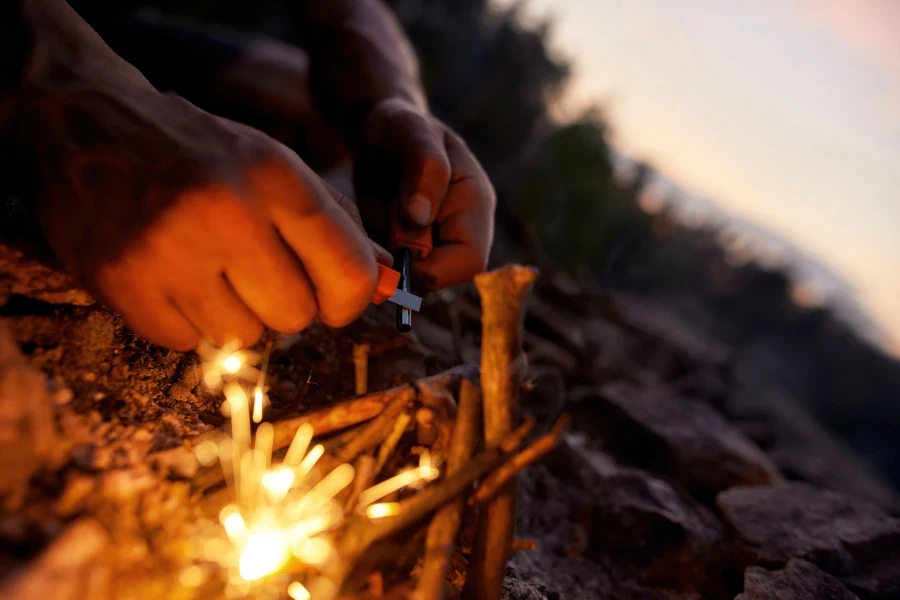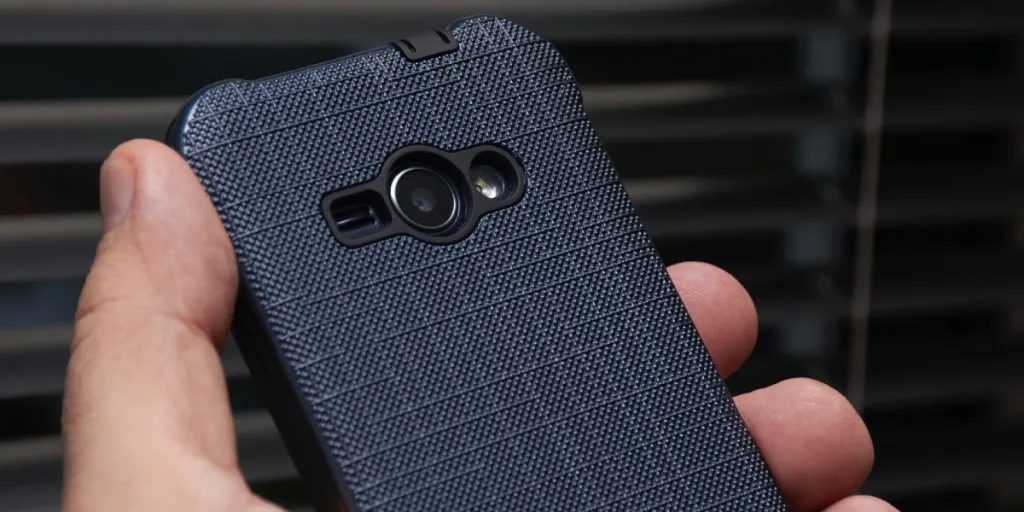Technology plays a crucial role in wilderness survival by enhancing safety, improving communication, providing access to essential information, and increasing overall preparedness. So, if your business is looking to provide tech to outdoor enthusiasts, it’s important to think about the additional equipment that survivalists are seeking and what factors survivalists consider when purchasing wilderness tech.
Here, we will discuss why technology plays a critical role in wilderness survival and what technology you want to carry to cater to this group of outdoor enthusiasts.
Table of Contents
Market for outdoor equipment
Why tech is essential for survivalists
Navigation and mapping tools
Communication devices
Portable power solutions
Water purification and filtration systems
Outdoor cooking
Fire-making tools
Conclusion
Market for outdoor equipment
The global camping equipment market was valued at USD 77.94 billion in 2022 and is projected to grow to USD 133.05 billion by 2030 with a compound annual growth rate (CAGR) of 6.9%. North America accounted for the largest share of the camping equipment market, with the United States being the major market, followed by Canada and Mexico.
According to the North American Camping Club report, Canada contributed to 64% of camping trips in North America. Due to the fast lifestyles and busy schedules, spending time with families via camping was one of the most favorable options chosen by North Americans.
But how many people are looking for outdoor equipment? According to Google Ads, there are more than 33,000 monthly searches for hiking gear and more than 12,000 monthly searches for survivalist tools.
Why tech is essential for survivalists
Technology is critical for wilderness survivalists because it enhances safety, provides access to essential information, and improves efficiency. And the quality of that technology is crucial because it can be a lifesaver in challenging and remote environments.
For businesses catering to outdoor enthusiasts, particularly wilderness survivalists, it’s critical to know the type of gear that is important and to ensure that it is reliable and durable. In the following sections, we will outline some of the most essential tech survivalists seek for their next trip.
Navigation and mapping tools
A GPS (Global Positioning System) is critical for wilderness survival for several compelling reasons:
- Accurate navigation: Provides precise location information, allowing wilderness survivalists to pinpoint their exact coordinates on a map. This accuracy is invaluable for navigating unfamiliar terrain, especially when landmarks are scarce or obscured by environmental factors like fog, heavy vegetation, or snow.
- Tracking progress: Allows survivalists to track their progress in real time, which helps confirm that they are on the right path and prevents getting lost, a situation that can quickly become life-threatening in the wilderness.
- Backtracking: In cases where people need to retrace their steps or backtrack to a previous location, GPS can provide step-by-step guidance, helping ensure they return to a known and safer area.
- Emergency situations: During emergencies, such as injuries or becoming disoriented, a GPS device can be a lifeline. It allows individuals to communicate their precise location to rescue teams or loved ones, expediting help and potentially saving lives.
- Geographical awareness: GPS devices often come with topographic maps and elevation data, providing users with a better understanding of the surrounding terrain. This information is valuable for choosing safe routes and avoiding hazardous areas like cliffs, steep slopes, or swamps.
While GPS is a valuable tool for wilderness survival, it’s essential to use it with other navigational skills, such as map reading and compass use. Technology can be a great aid, but it should not replace fundamental outdoor skills. Overall, a GPS is a critical addition to the toolkit of any wilderness survivalist, providing an extra layer of safety and preparedness in remote and challenging environments.
Choosing GPS devices for wilderness survivalists
Choosing the right GPS device for camping and wilderness survival is important. Here are essential factors to consider and which GPS devices fit these requirements:
- Accuracy and signal strength: preferably within a few meters.
- Long battery life: Determine how the GPS device charges. Some models use replaceable batteries, while others have rechargeable built-in batteries. Some even support solar charging, which can be handy for extended wilderness trips.
- Durability: A sturdy, weather-resistant construction ensures reliability in outdoor conditions.
- Readability: Ensure the screen is easy to read in various lighting conditions, including direct sunlight.
- Maps and topography: Check if the GPS device comes with preloaded maps or supports map downloads. Consider whether it includes topographic maps, which are particularly useful for wilderness navigation.
- Waypoints and routes: Assess the device’s capacity to store waypoints and routes.
- Tracklog: A tracklog records a person’s path as they travel, allowing them to retrace their steps if needed. Ensure the device can record a sufficient number of track points.
- Connectivity: Consider whether the GPS device has Bluetooth, Wi-Fi, or USB connectivity to enable data transfer or map updates.
- Altimeter and barometer: Some GPS units come with altimeters and barometers, which provide valuable information on altitude and weather changes. These features can enhance safety and route planning.
Communication devices

Communication devices are essential for wilderness survivalists because they can call for help and receive critical information when venturing into remote areas.
Here are communication devices for wilderness survivalists:
- Satellite phone: Satellite phones are a lifeline in areas without cellular coverage. They connect to satellites orbiting the Earth, enabling voice calls, text messages, and even data communications from almost anywhere.
- Two-way radios: Two-way radios, also known as walkie-talkies, allow communication within a short range. They are invaluable for keeping in touch with group members when hiking or camping in areas with no cell signal. Of course, it’s essential to have rugged, weatherproof models when out in the wilderness.
- Satellite messengers: Satellite messengers, like SPOT and inReach devices, enable two-way text communication through the Iridium satellite network. They can also send SOS signals with your GPS coordinates to emergency services.
- Personal locator beacon (PLB): PLBs are emergency devices that transmit a distress signal to search and rescue authorities. They are registered to a person’s name and work via satellites, ensuring that help is alerted even if they can’t communicate their situation.
Additionally, emergency radios (hand-crank or solar-powered) can provide essential weather updates and emergency alerts.
Portable power solutions

An essential consideration for a successful outdoor experience is ensuring devices have ample battery life and the means to keep them charged. In the wild, a charged device can be a person’s lifeline, offering the ability to reach out for help, navigate using GPS, check weather forecasts, etc.
Devices like headlamps, lanterns, and other trusty gadgets typically rely on batteries or need a power source. That’s where having a reliable battery bank comes into play, ensuring the camping trip is comfortable and safe.
What to look for in a camping charger
Consider these important factors when it comes to charging solutions for those who are trekking into the wilderness:
- Versatility: Look at battery banks that can charge multiple devices simultaneously. This capability ensures people can keep all their essential devices powered up.
- Durability: In the rugged and unpredictable wilderness, accidents happen. Look for a battery bank built tough and capable of withstanding accidental drops and rough handling without compromising its functionality. Durability is vital when far from the conveniences of home.
- Solar charging option: For eco-conscious campers and those looking to maximize their independence from traditional power sources, consider a battery bank that can be recharged using solar energy. Some models even come equipped with built-in solar panels, harnessing the sun’s energy during the day to keep devices humming at night and keep survivalists safe. Plus, some solar-powered chargers even double as portable lights, illuminating the campsite after dark.
- Capacity: Think beyond just charging a smartphone and Bluetooth speaker. Those planning an extended stay in the wilderness are more likely to consider a charging station that can handle larger loads.
Water purification and filtration systems

Water is critical when it comes to surviving in the wilderness. While a person can survive several weeks without food, most cannot survive more than three days without water.
Technology can assist wilderness survivalists in treating water to make it safer to drink in the wilderness, such as compact and efficient water purification systems, portable water filters, gravity filtration systems or UV water purifiers.
There are even now self-cleaning water bottles (this one even comes with a digital temperature indicator), water filtration straws, and water bottles with built-in water filtration straws.
Outdoor cooking

Cooking outdoors is essential but no longer requires bulky camping stoves, which is what wilderness survivalists are looking for because they have to fit everything they bring in a backpack. New camping stoves are much more portable and have features like charging for devices like smartphones.
Fire-making tools

The ability to make a fire can also make all the difference when out in the wilderness. Even if it isn’t a life or death situation, having a fire can significantly increase a person’s comfort level when outdoors for days at a time.
There is some fantastic technology that wilderness survivalists can carry to help assist them in making a fire:
- Fire starter kits: These compact kits typically include a ferrocerium rod (firesteel) and a striker. They create sparks when struck together, igniting tinder or dry kindling. Firestarter kits are lightweight and reliable in various weather conditions.
- Waterproof matches: Waterproof matches are specially treated to resist moisture and can be ignited even after being submerged. They are a convenient and lightweight fire-starting option for backpackers.
- Electric arc lighters: Electric arc lighters use a small electrical spark to ignite tinder. They are windproof and rechargeable via USB, making them eco-friendly.
- Magnesium fire starters: These devices include a magnesium block and a striker. Shavings of magnesium are scraped off and ignited to create a hot, intense flame that can ignite tinder.
- Solar lighters: Solar lighters use a parabolic mirror to focus sunlight on a specific point, creating intense heat to ignite tinder. They are ideal for sunny conditions.
Conclusion
Technology has become a vital ally for wilderness survivalists, enhancing safety, efficiency, and overall preparedness in the wild. From precise navigation through GPS devices to lifeline communication tools like satellite phones and two-way radios, modern tech is pivotal in ensuring adventurers’ well-being.
Remember that the reliability and durability of these gadgets are paramount in survival situations, so take this into consideration when marketing products. Additionally, offering educational resources or workshops on effectively using these gadgets can be a valuable addition to your retail strategy.







